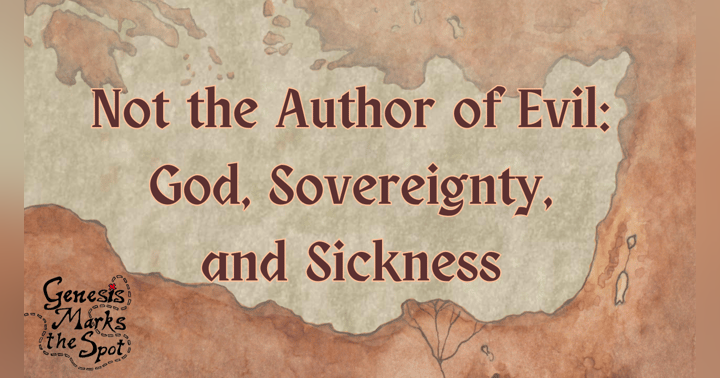Understanding the Toolbox: Biblical Interpretation Methods

This blog post is a resource for episode 136 because I know it’s a lot of data and I know your hand is going to cramp while trying to write notes as you're listening, so here you go. (Promise me you'll still write notes, tho, right???) In this episode, I dive into the often-unspoken frameworks that shape how we interpret Scripture. We walk through the major interpretive methodologies used today, explore how they intersect or compete, and reflect on how terms like "righteousness" and "salvation" have been reframed over time—which leads to some unhelpful things.
A Survey of Biblical Interpretation Methodologies
Understanding how meaning is drawn from Scripture involves more than just reading the words—it involves method. Here’s a concise overview of the most prominent interpretive approaches:
1. Historical-Grammatical Method
Seeks the original author's intended meaning using grammar, syntax, and historical context. It assumes one coherent, inspired meaning in each text and is common in evangelical traditions. (When known as the "literal" grammatical-historical method, the emphasis is often on the "plain reading" of the text as if that's a clear interpretation that anyone could understand.)
2. Historical-Critical Method
Analyzes how the text developed over time—through sources, redactions, and social evolution. Often used in academic contexts, it can undercut the unity or theological cohesion of the Bible.
3. Socio-Cultural / ANE Contextual Method
Emphasizes the cultural and worldview background of the biblical world. This method, associated with John Walton and others, uses ancient Near Eastern texts and social patterns to frame how Israel would have understood Scripture.
4. Literary/Narrative Method
Focuses on the final form of the text as a story or structured literary work. It examines plot, structure, repetition, and genre to see how meaning is shaped beyond just words.
5. Canonical Method
Treats the Bible as a unified theological whole. It interprets individual texts in light of their place within the canon and sees theological continuity across testaments—often culminating in Christ.
The Role of “Frames” in Interpreting Key Biblical Concepts
Our assumptions about words—formed by sermons, translations, and theological traditions—can distort what biblical terms originally meant. Frame semantics reminds us: words don’t mean much on their own; they live inside shared cultural frameworks.
Here are four important terms that are often reframed (and misframed) today:
Righteousness
|
Modern Frame |
Biblical Frame |
|
|
Domain |
Legal status before God |
Relational fidelity in covenant |
|
Meaning |
Moral perfection or justification |
Faithful performance of one’s role (human or divine) |
|
Example |
“I am declared righteous” = forensic |
“He is righteous” = keeps covenant and does justice |
Holiness
|
Modern Frame |
Biblical Frame |
|
|
Domain |
Morality, sinlessness |
Sacred space, divine order |
|
Meaning |
Personal purity |
Set apart for divine purpose; ritually or spatially distinct |
|
Example |
“Holiness = not sinning” |
“Holy = belongs to God’s domain and functions in his presence” |
Obedience
|
Modern Frame |
Biblical Frame |
|
|
Domain |
Legal rule-following |
Covenant participation |
|
Meaning |
Keeping rules to earn favor or avoid judgment |
Living in line with God's created and covenantal order |
|
Example |
“Obey or be punished” |
“Obey to stay aligned with God's wisdom and presence” |
Salvation
|
Modern Frame |
Biblical Frame |
|
|
Domain |
Afterlife status |
Rescue and restoration in covenant |
|
Meaning |
Going to heaven; legal acquittal |
Deliverance from chaos/enemies; restored relationship and purpose |
|
Example |
“I got saved” = now I go to heaven |
“God saved us” = he delivered us from slavery/exile/death |
Where This All Comes Together
In this episode, we explore how John Walton’s methodology challenges certain theological assumptions not by discarding Scripture, but by reframing it—asking us to see it through its own ancient lens.
But this also raises questions:
- Do these methods complement one another—or create conflict?
- How do we avoid modern distortions without abandoning doctrinal clarity?
- What happens when we let ancient frames speak before systematic theology does?
If our theological categories come first, we might read Scripture through a lens that was never there to begin with. But if we let Scripture shape its own meaning—through genre, covenant, context, and canon—we may discover a richness and coherence that transcends systems and speaks to the whole person.
Interpretation is never neutral.
But it can be faithful.
Give this episode a listen for more details about frame semantics and how we can wield the power of more than one methodology to create a more holistic understanding of Scripture.









